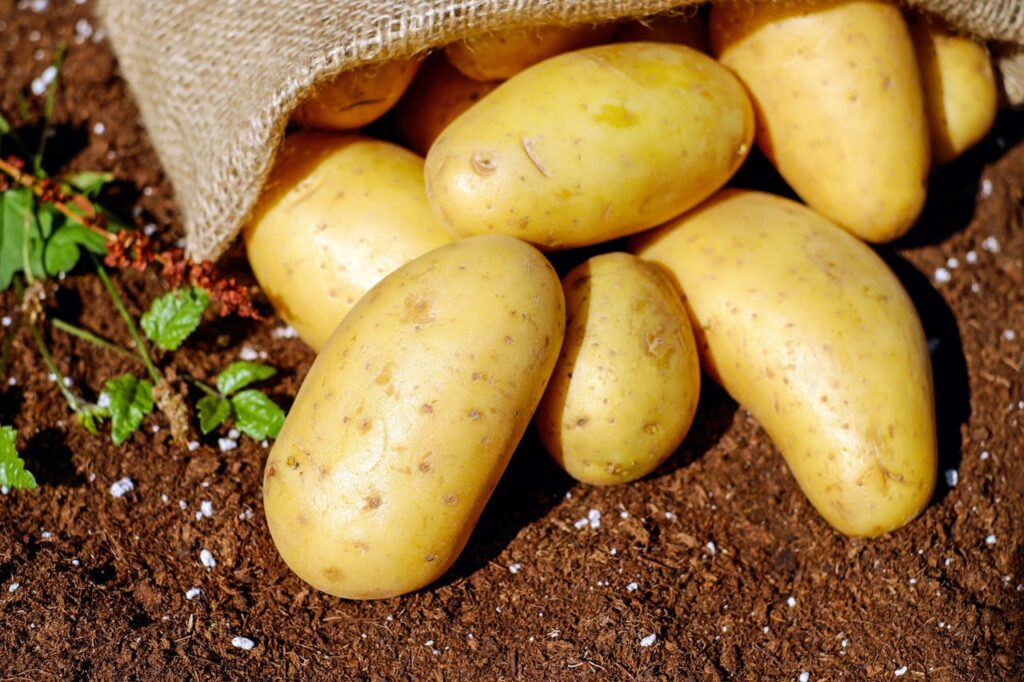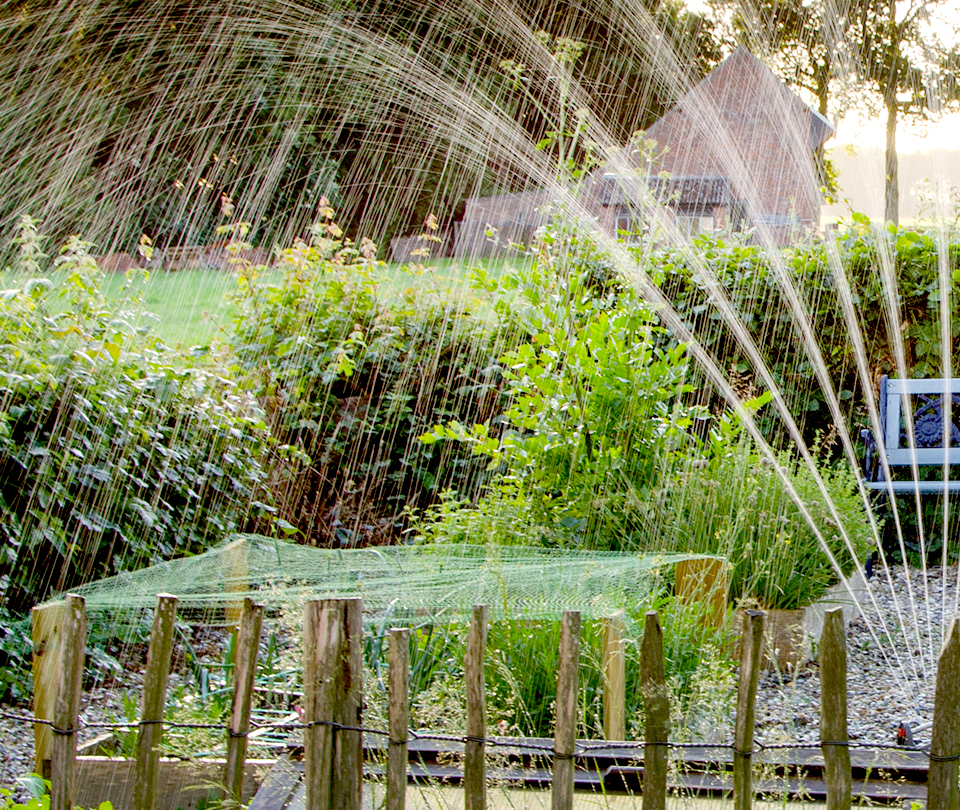Organic gardening is becoming increasingly popular as people seek healthier and more sustainable ways to grow their own food. Growing organic vegetables at home not only provides you with fresh produce but also ensures that you know exactly what has gone into growing your food, free from harmful chemicals and pesticides. This article will guide you through the top 5 organic vegetables to grow at home, emphasizing their benefits, and providing detailed tips on how to cultivate them successfully in your garden.
Criteria for Selecting Organic Vegetables
When selecting organic vegetables to grow at home, consider the following criteria:
- Ease of growth: Choose vegetables that are relatively easy to grow, especially if you are a beginner.
- Suitability for home gardens: Opt for vegetables that thrive in small garden spaces or containers.
- Nutritional value: Prioritize vegetables that offer high nutritional benefits.
- Versatility in cooking: Select vegetables that can be used in a variety of dishes and cooking methods.
Top 5 Organic Vegetables to Grow at Home
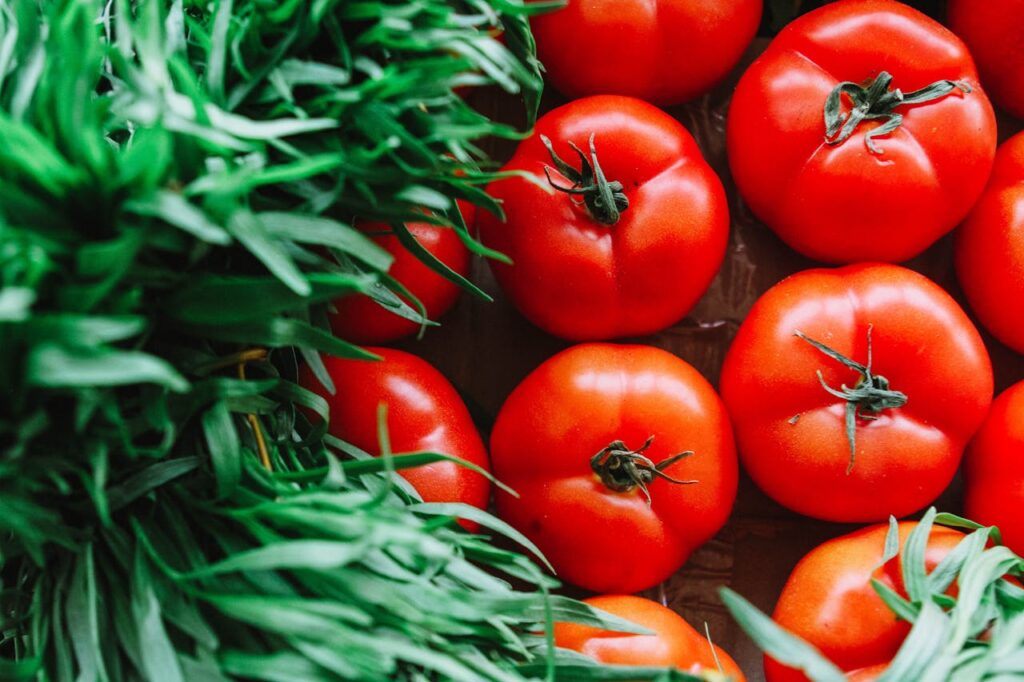
1. Organic Tomatoes – Varieties Suitable for Home Gardening
Tomatoes are a favorite among home gardeners due to their versatility and rich flavor. Some popular varieties for home gardening include:
- Heirloom varieties: Such as Brandywine, Cherokee Purple, and Black Krim.
- Cherry tomatoes: Like Sweet 100 and Sungold.
- Roma tomatoes: Known for their thick flesh and fewer seeds, ideal for sauces.
- Growing Conditions and Soil Preparation: Tomatoes thrive in full sunlight, requiring at least 6-8 hours of direct sun each day. Prepare the soil by testing its pH and amending it with organic compost to ensure it is slightly acidic, with a pH between 6.0 and 6.8. Well-draining soil is crucial to prevent waterlogging.
- Planting and Care Tips: Start tomato seeds indoors 6-8 weeks before the last frost date, or purchase healthy seedlings from a nursery. Transplant seedlings into the garden after the danger of frost has passed, spacing them 18-24 inches apart. Water regularly, keeping the soil evenly moist but not waterlogged. Mulch around the plants to retain moisture and suppress weeds.
- Common Pests and Diseases: Tomatoes are susceptible to pests such as aphids, whiteflies, and tomato hornworms. Use organic pest control methods like neem oil or introduce beneficial insects like ladybugs. To prevent diseases like blight, practice crop rotation, ensure good air circulation, and water the base of the plants rather than the leaves.
- Harvesting and Storage: Tomatoes are ready to harvest when they reach their full color and are slightly firm to the touch. Use pruning shears to cut the fruit from the plant, leaving a small portion of the stem attached. Store tomatoes at room temperature and use them fresh or in cooked dishes.
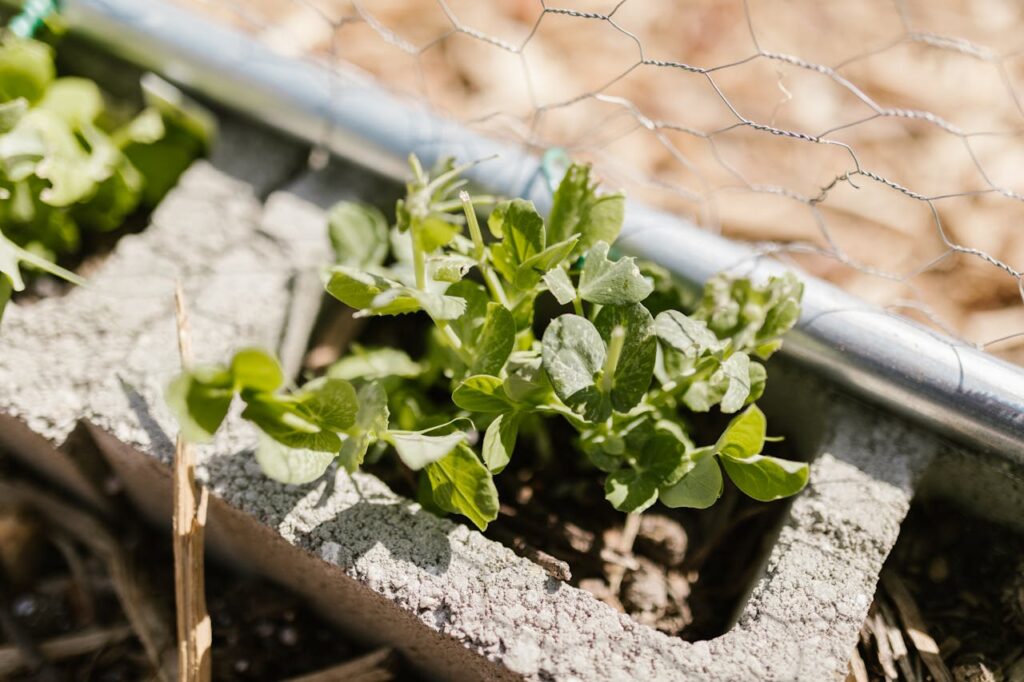
2. Organic Leafy Greens (Spinach, Kale, Lettuce) – Varieties and Their Benefits
Leafy greens are nutrient-dense and easy to grow. Some popular varieties include:
- Spinach: Varieties like Bloomsdale and Tyee.
- Kale: Curly kale, Lacinato (Dinosaur) kale.
- Lettuce: Butterhead, Romaine, and Leaf lettuce.
- Ideal Growing Conditions: Leafy greens prefer cooler temperatures, making them ideal for spring and fall planting. They thrive in well-drained soil enriched with organic matter. Ensure they receive at least 4-6 hours of sunlight daily.
- Planting and Maintenance: Direct sow seeds in the garden or start them indoors and transplant them when they have a few true leaves. Space plants 6-12 inches apart. Water consistently, keeping the soil moist but not soggy. Mulch to retain moisture and control weeds.
- Pest and Disease Management: Common pests include aphids, slugs, and flea beetles. Use organic pest control methods such as diatomaceous earth and companion planting. Leafy greens are prone to fungal diseases like downy mildew; ensure proper spacing and airflow to prevent this.
- Harvesting and Best Use: Harvest leafy greens by cutting the outer leaves when they are young and tender. Regular harvesting encourages new growth. Use them fresh in salads, smoothies, or cooked dishes.
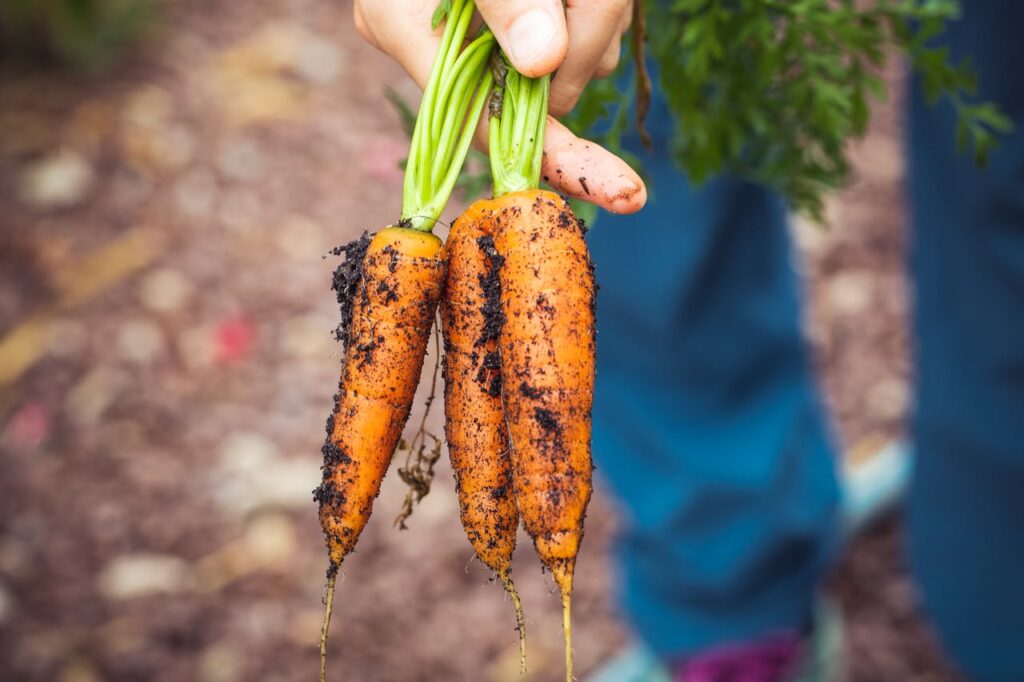
3. Organic Carrots – Popular Carrot Varieties for Home Gardens
Carrots are a root vegetable that can be grown in various climates. Recommended varieties include:
- Nantes: Known for their sweet flavor and crisp texture.
- Danvers: Ideal for heavy soils due to their shorter length.
- Imperator: Commonly found in grocery stores, long and tapered.
- Soil Preparation and Planting Depth: Carrots require loose, well-drained soil free of stones and debris. Amend the soil with compost to improve texture and fertility. Sow seeds directly into the garden, about 1/4 inch deep, and thin seedlings to 2-3 inches apart.
- Watering and Care: Keep the soil consistently moist, especially during germination. Mulch around the plants to retain moisture and suppress weeds. Carrots benefit from regular, deep watering to encourage proper root development.
- Pest Control and Disease Prevention: Carrot flies and nematodes are common pests. Use row covers to protect young plants and practice crop rotation to prevent nematode infestations. Ensure proper spacing and airflow to reduce the risk of fungal diseases.
- Harvesting and Storage Tips: Carrots are ready to harvest when they reach a mature size, typically 60-80 days after planting. Gently loosen the soil around the roots before pulling them out. Store harvested carrots in a cool, dark place to preserve their freshness.
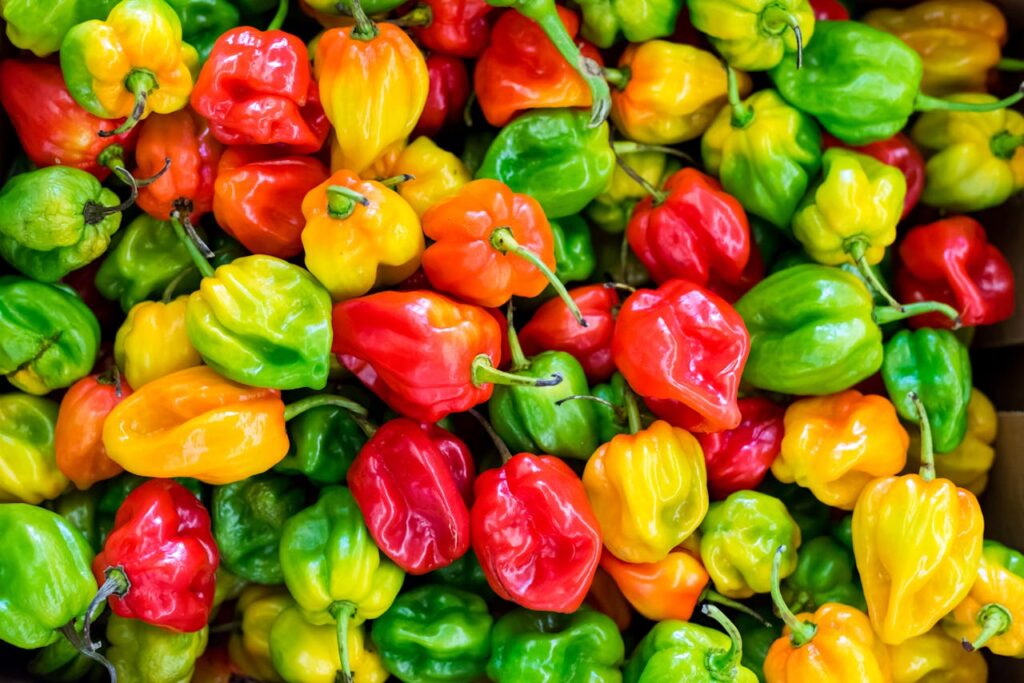
4. Organic Peppers (Bell Peppers, Chili Peppers)
- Types of Peppers to Grow: Peppers add flavor and color to your garden. Popular varieties include:
- Bell peppers: California Wonder, Red Beauty.
- Chili peppers: Jalapeno, Cayenne, Habanero.
- Optimal Growing Conditions: Peppers thrive in warm temperatures and need full sun. They prefer well-drained, loamy soil with a pH of 6.0-6.8. Amend the soil with compost or organic matter before planting.
- Planting, Staking, and Care: Start seeds indoors 8-10 weeks before the last frost date or purchase seedlings. Transplant them into the garden after the danger of frost has passed, spacing them 18-24 inches apart. Stake taller varieties to prevent them from falling over. Water regularly, keeping the soil moist but not waterlogged.
- Managing Pests and Diseases: Common pests include aphids, spider mites, and pepper maggots. Use organic insecticidal soap or introduce beneficial insects to control pests. To prevent diseases like bacterial spot and blossom end rot, ensure good air circulation and avoid overhead watering.
- Harvesting and Preserving Peppers: Peppers can be harvested when they reach the desired size and color. Use scissors or pruning shears to cut the fruit from the plant. Peppers can be used fresh, dried, or preserved by pickling or freezing.

5. Organic Cucumbers
- Cucumber Varieties for Home Gardens: Cucumbers are a versatile vegetable that can be grown in various forms. Popular varieties include:
- Slicing cucumbers: Straight Eight, Marketmore.
- Pickling cucumbers: Boston Pickling, National Pickling.
- Burpless cucumbers: Armenian, English.
- Soil and Sunlight Requirements: Cucumbers thrive in warm temperatures and require full sun. They prefer well-drained, sandy loam soil with a pH of 6.0-6.8. Prepare the soil by adding compost or well-rotted manure.
- Planting Techniques and Trellising: Direct sow cucumber seeds in the garden after the danger of frost has passed, spacing them 12-18 inches apart. For vertical growing, use trellises to support the plants and save space. This also helps keep the fruit clean and reduces the risk of disease.
- Pest and Disease Management: Cucumbers are susceptible to pests like cucumber beetles and aphids. Use organic pest control methods such as neem oil or insecticidal soap. Common diseases include powdery mildew and downy mildew; ensure proper spacing and airflow to prevent these issues.
- Harvesting and Storage: Harvest cucumbers when they are firm and green, before they become overripe and yellow. Use scissors to cut the fruit from the vine. Store cucumbers in a cool, dry place and use them fresh in salads, pickles, or as snacks.
Tips for Successful Organic Gardening
To ensure a thriving organic garden, follow these tips:
- Use Compost and Organic Fertilizers: Enrich the soil with compost and organic fertilizers to provide essential nutrients.
- Watering Practices: Water your garden consistently and deeply, using drip irrigation or soaker hoses to minimize water wastage and reduce the risk of disease.
- Companion Planting: Plant compatible vegetables together to naturally deter pests and improve growth.
- Crop Rotation: Rotate crops each season to maintain soil health and prevent disease buildup.
- Sustainable Pest and Weed Management: Use organic methods such as mulching, hand-weeding, and natural pest deterrents to keep your garden healthy.
Conclusion
Growing organic vegetables at home is a rewarding and sustainable way to enjoy fresh, healthy produce. By selecting the right vegetables, preparing your garden properly, and following organic gardening practices, you can successfully cultivate a thriving garden. The top 5 organic vegetables to grow at home—tomatoes, leafy greens, carrots, peppers, and cucumbers—are all excellent choices for both beginners and experienced gardeners. Start your organic gardening journey today and reap the delicious and nutritious benefits.
Frequently Asked Questions (FAQs)
Q: What are the easiest organic vegetables to grow at home?
A: Leafy greens like spinach, kale, and lettuce are among the easiest organic vegetables to grow due to their fast growth and minimal care requirements.
Q: How can I control pests in my organic garden without using chemicals?
A: Use organic methods such as introducing beneficial insects, applying neem oil, and using physical barriers like row covers to control pests.
Q: How often should I water my organic vegetable garden?
A: Water consistently and deeply, ensuring the soil remains moist but not waterlogged. Adjust watering frequency based on weather conditions and the specific needs of each vegetable.
Q: Can I grow organic vegetables in containers?
A: Yes, many organic vegetables can be grown in containers, provided they have adequate space, soil, and sunlight. Container gardening is especially useful for those with limited garden space.
Q: What are the benefits of companion planting in an organic garden?
A: Companion planting helps deter pests, improve pollination, and enhance growth by planting compatible vegetables together. For example, planting basil near tomatoes can repel pests and enhance flavor.
